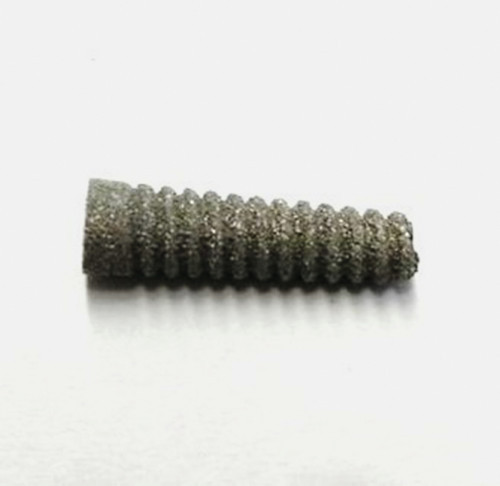Medical implants are made from biocompatible materials so that they grow well into living organisms. Titanium and its alloys are very frequently used materials and can also be processed in 3D printing using modern techniques.
With the DLIP laser modules (DLIP = direct laser interference patterning) developed at the Fraunhofer IWS, additively manufactured implants could also be processed for the first time in order to improve the adhesion of bone cells. A single laser beam is split into two partial beams, which are then superimposed on the substrate surface, where they form a linear interference pattern with a specific spatial period.
 Laser-textured, additively manufactured dental screw made of near-beta titanium to increase osseointegration
Laser-textured, additively manufactured dental screw made of near-beta titanium to increase osseointegration
The interference pattern is transferred directly to the implant surface and the surface is equipped with osteoconductive microstructures. Laser processing of the implant surface does not require any additional materials such as abrasives or acids to form the surface shape. It is therefore particularly sustainable and cost-efficient. In a cell study, an increase in the number of osteoblasts of up to 250% was demonstrated on DLIP-machined surfaces compared to the shape-etched surface. Laser processing also contributes to a thickening of the oxide layer and a change in wetting behavior.


